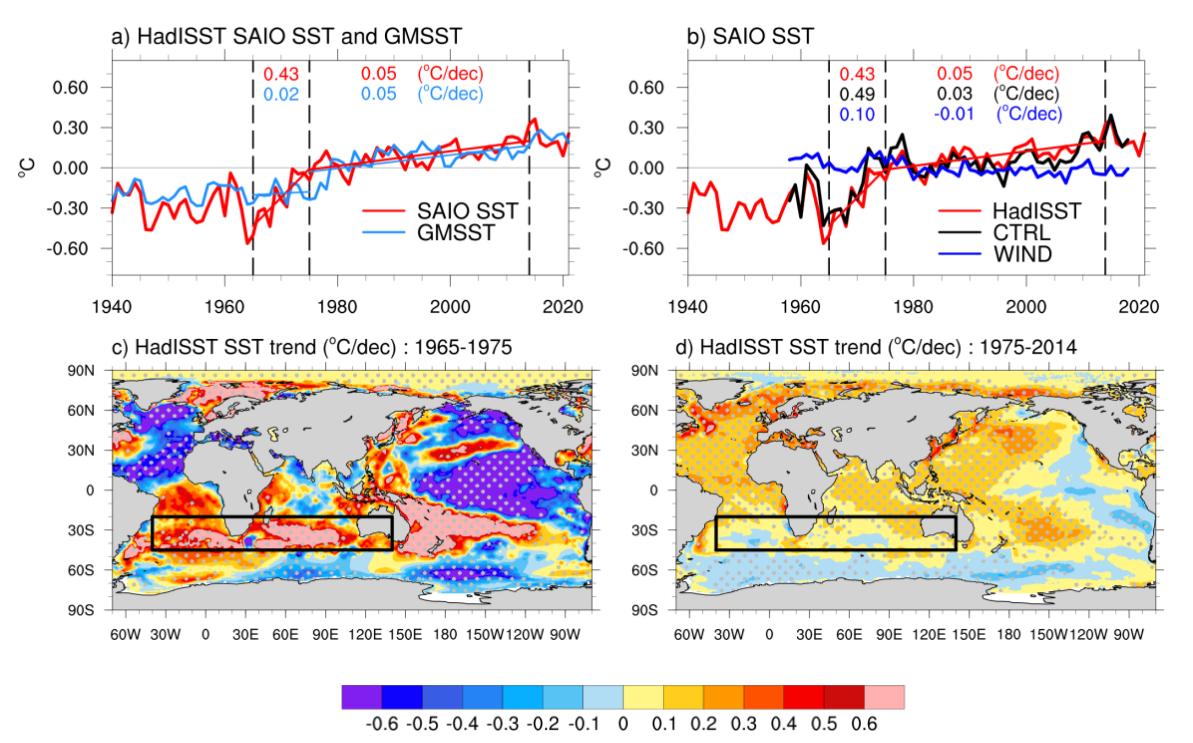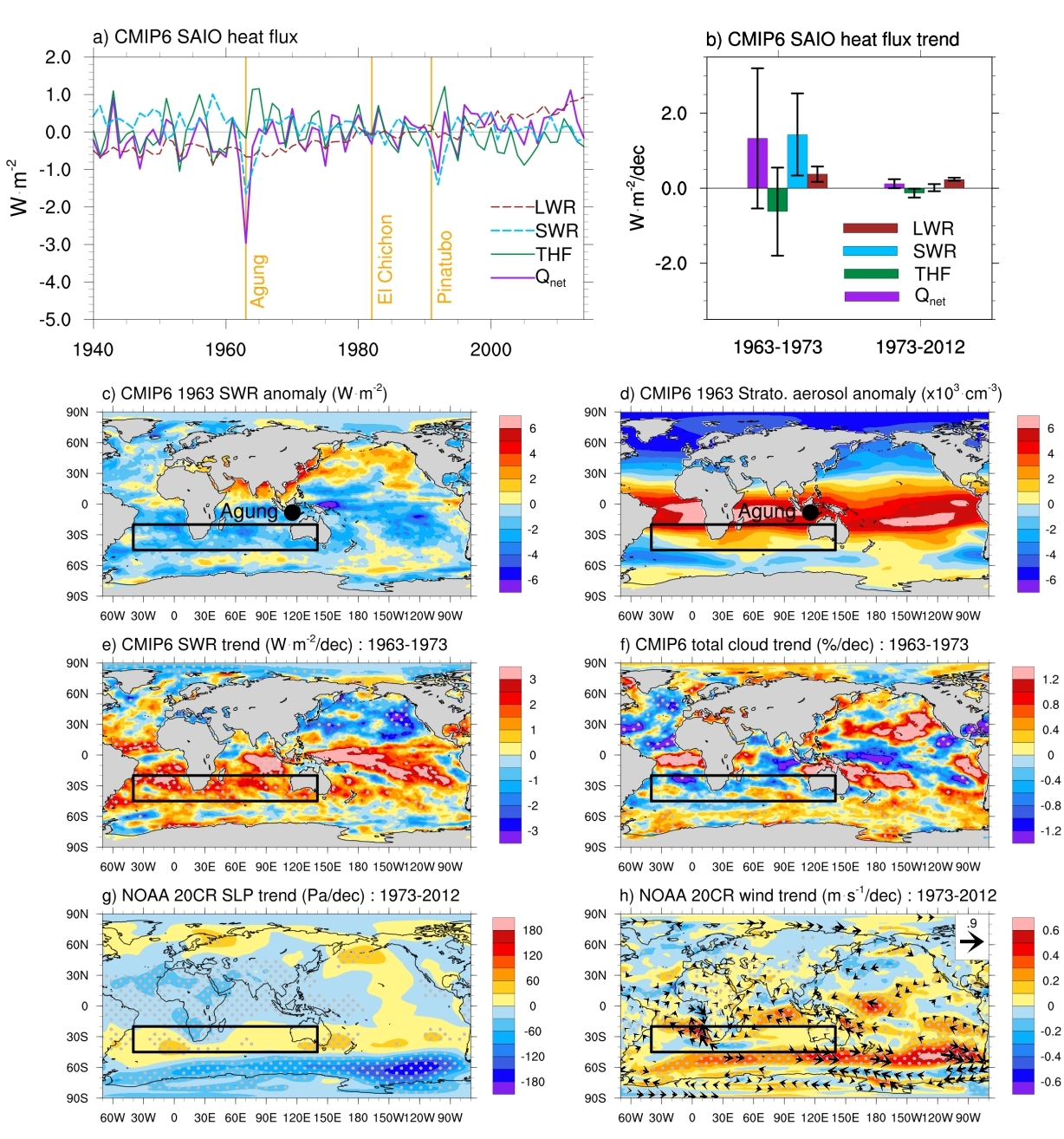Sea surface temperatures (SSTs) in the southern Atlantic and Indian Oceans (SAIOs) show prominent multidecadal variations, with notable impacts on rainfalls over Southern-Hemisphere continents. However, the origins of these variations remain uncertain.
Recently, the research team led by Prof. WANG Fan from the Institute of Oceanology of the Chinese Academy of Sciences (IOCAS) and collaborators from the Institute of Atmospheric Physics (IAP) of the Chinese Academy of Sciences and South China Sea Institute of Oceanology, Chinese Academy of Sciences, revealed the origins of synchronous SST variations in the southern Atlantic and Indian Oceans since the 1960s.
The study was published in Geophysical Research Letters on Feb. 17.
While previous studies overall stressed internal climate variability, this study suggests essential effects of external drivers such as volcanic eruptions and Antarctic ozone depletion on the changes in the SST warming rate of the SAIO since the 1960s.
Researchers investigated multidecadal SST variations in the SAIO by synthesizing observational data sets and climate model (CMIP6) simulations, focusing on the two period of the decade-long warming surge (0.43 °C/decade) during 1965-1975 and the stalled warming pace (0.05 °C/decade) since the late-1970s. The 1965-1975 warming was preconditioned by an abrupt cooling in 1963 caused by the eruption of Mount Agung, and led to a decade surge due to the following recovery of radiative heating. Since the late-1970s, the increasing greenhouse gases and the Antarctic ozone depletion enhanced westerly winds and turbulent heat flux (THF) release in the SAIO, which led to a slowdown of SST warming.
“The Interdecadal Pacific Variability (IPV) can also modulate the SAIO SST through atmospheric teleconnections, but the role of internal variability is overall secondary,” said GAO Xing, first author of the study.
“Our findings are helpful for understanding of the mechanisms of the SST variability in the vast southern Atlantic-Indian Ocean, and will contribute to the assessment and improvement of climate models,” said Dr. LI Yuanlong, the corresponding author.
This work was supported by the Laoshan Laboratory and the National Key R & D Program of China, etc.

Fig. 1 (a) Time series of SAIO SST and global mean sea surface temperature (GMSST). (b) Time series of SAIO SST obtained from observations and the CTRL and WIND experiments of LICOM3. (c-d) Linear trends in SST for the periods 1965-1975 and 1975-2014.

Fig. 2 (a) Time series of the average surface heat flux in the SAIO (LWR is long-wave radiation, SWR is short-wave radiation, THF is turbulent heat flux, and Qnet is total heat flux). The yellow vertical lines indicate volcanic events. (b) Linear trends of the total heat flux and its components over the periods 1963-1973 and 1973-2012. (c-d) SWR and stratospheric aerosol anomalies in 1963. (d-f) Linear trends of SWR and total cloudiness during 1963-1973. (g-h) Linear trends of sea level pressure (SLP) and wind during 1973-2012.
Gao, X., Li, Y.*, Lin, P., Zhang, L., Ren, Q., Lu, Y., & Wang, F. (2023). Origins of multidecadal SST variations in the southern Atlantic and Indian Oceans since the 1960s. Geophysical Research Letters, 50, e2022GL101735.
(Text by GAO Xing)
Media Contact:
ZHANG Yiyi
Institute of Oceanology
E-mail: zhangyiyi@qdio.ac.cn
(Editor: ZHANG Yiyi)

